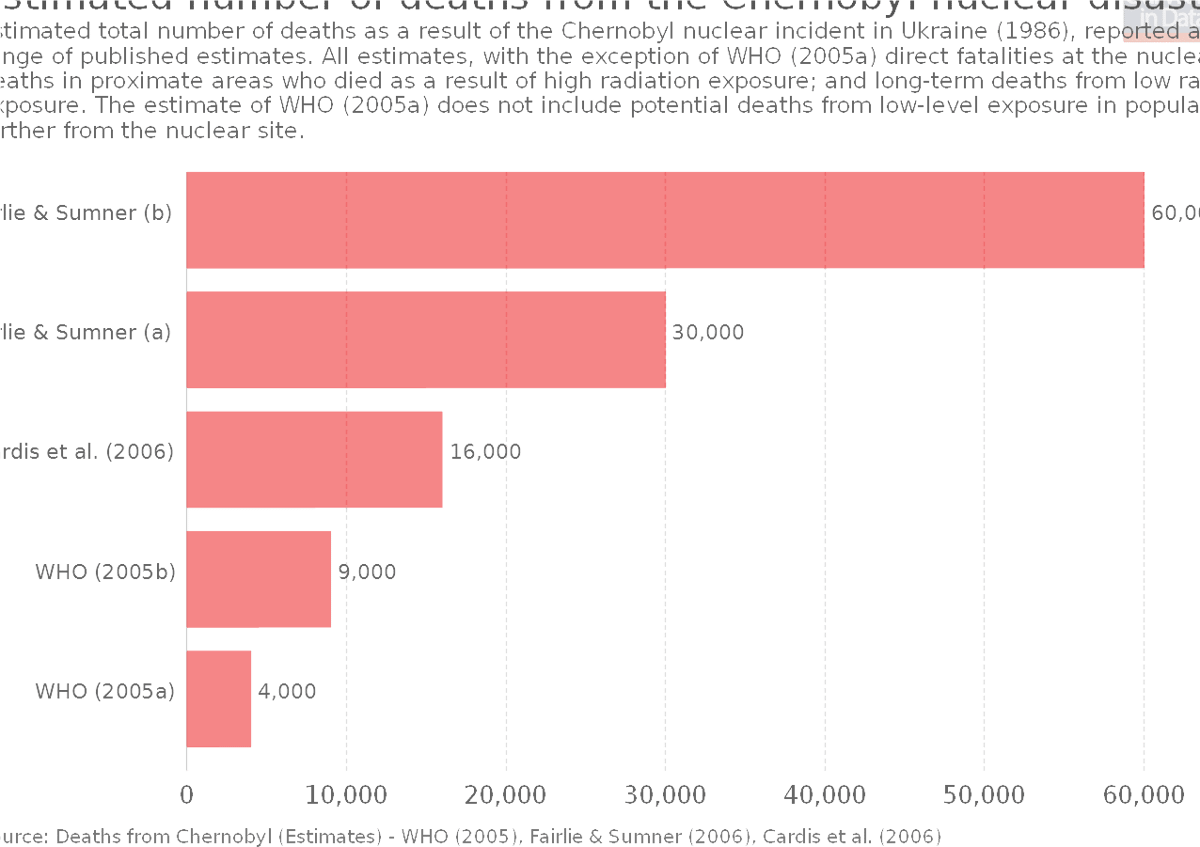Revisiting Chernobyl

I’ve spent the last few years fascinated by the Chernobyl disaster. This fascination partly grew out of my interest in the Flint Water Crisis, which was directly compared to Chernobyl in a story I wrote about it. (One of the things people forget is that Chernobyl poisoned the water table for a huge region.)
“Looking Again At Chernobyl” reviews two books: Midnight In Chernobyl: The Untold Story of the World’s Greatest Nuclear Disaster, by Adam Higginbotham, and Manual For Survival: A Chernobyl Guide to the Future, by Kate Brown.
The similarities with Flint start in the opening paragraph:
Catastrophes happen when a large system gets so out of sync with its environment that a tiny tweak can crash it to the ground. It’s happened to oil rigs, spacecraft and mines. Afterward, committees blame the people who did the tweaking. But what matters is how the system became unstable and crashed, the atmosphere that caused it and the aftereffects. In these two books about the April 1986 explosion of the No. 4 reactor at the Chernobyl nuclear power plant, “Midnight in Chernobyl” focuses on the first and second, “Manual for Survival” on the third.
It’s probably fair to say that we’ve spent the last thirty years acting as if we don’t live in a post-Chernobyl world.
Robert P. Crease, the reviewer, seems most taken with Higginbotham’s book:
Adam Higginbotham’s “Midnight in Chernobyl” is a gripping, miss-your-subway-stop read. The details of the disaster pile up inexorably. They include worn control rod switches, the 2,000-ton reactor lid nicknamed Elena, a core so huge that understanding its behavior was impossible. Politicians lacked the technical knowledge to take action, while scientists who had the knowledge feared to provide it lest they lose their jobs or lives…
The explosion occurs less than 100 pages into this 366-page book (plus more than 100 pages of notes, glossary, cast of characters and explanation of radiation units). But what follows is equally gripping. Radio-controlled repair bulldozers became stuck in the rubble. Exposure to radiation made voices grow high and squeaky. A dying man whispered to his nurse to step back because he was too radioactive. A workman’s radioactive shoe was the first sign in Sweden of a nuclear accident 1,000 miles upwind. Soviet bigwigs entered the area with high-tech dosimeters they didn’t know how to turn on. Investigations blamed the accident on six tweakers, portrayed them as “hooligans” and convicted them. The United Nations Scientific Committee on the Effects of Atomic Radiation (Unscear), which is to radiation studies something like what the Intergovernmental Panel on Climate Change (I.P.C.C.) is to assessing human-induced climate effects, struggled to make sense of changing and confusing information.
Brown’s book is trying to do something very different, and Crease finds it correspondingly more complicated to evaluate:
Kate Brown’s “Manual for Survival” has a different style and emphasis. Its aim is to be an exposé of the attempts to minimize the impact of Chernobyl. The disaster was less an accident, says Brown, a historian at M.I.T., than “an exclamation point in a chain of toxic exposures that restructured the landscape, bodies and politics.” Unscear’s publications were cover-ups, and radiation-related maladies are “a dark horseman riding wild across the Chernobyl territories.” Brown undertook the book so as not to become “one of those duped comrades who found out too late that the survival manual contained a pack of lies.”
Around 2014, Brown began interviewing people in the affected areas, and sought measurements of radioactivity in such things as wool, livestock and swamps. Her stories are affecting, yet it is hard to evaluate memories and anecdotes. It is also hard to evaluate measurements. These are meaningful only within the tangled web of factors that radiation epidemiologists consider — including type and time-span of dose, pathways through the body, susceptibility of individual tissues and background radiation — as well as health issues like alcohol, obesity and stress.
Brown deserves credit, though, for wading into these murkier waters, because the murky waters is where we are. Part of reckoning with Chernobyl means admitting everything we don’t know. We don’t know the full health effects of the disaster. We don’t know how many people died. We don’t know how many lives were lost to neglect and cover-up. We don’t know how many could have been saved.
Part of what it means to actually live in a post-Chernobyl world is to accept that our most vital infrastructure is always threatened; that the threats it poses are always disproportionately affecting a society’s most vulnerable citizens; and that its threats are always downplayed by a society’s most powerful and directly responsible members, out of ignorance and fear.
That’s the lesson of Chernobyl. That’s the lesson of Flint. That’s the lesson of the future, which it never seems to hesitate to teach.





Stay Connected